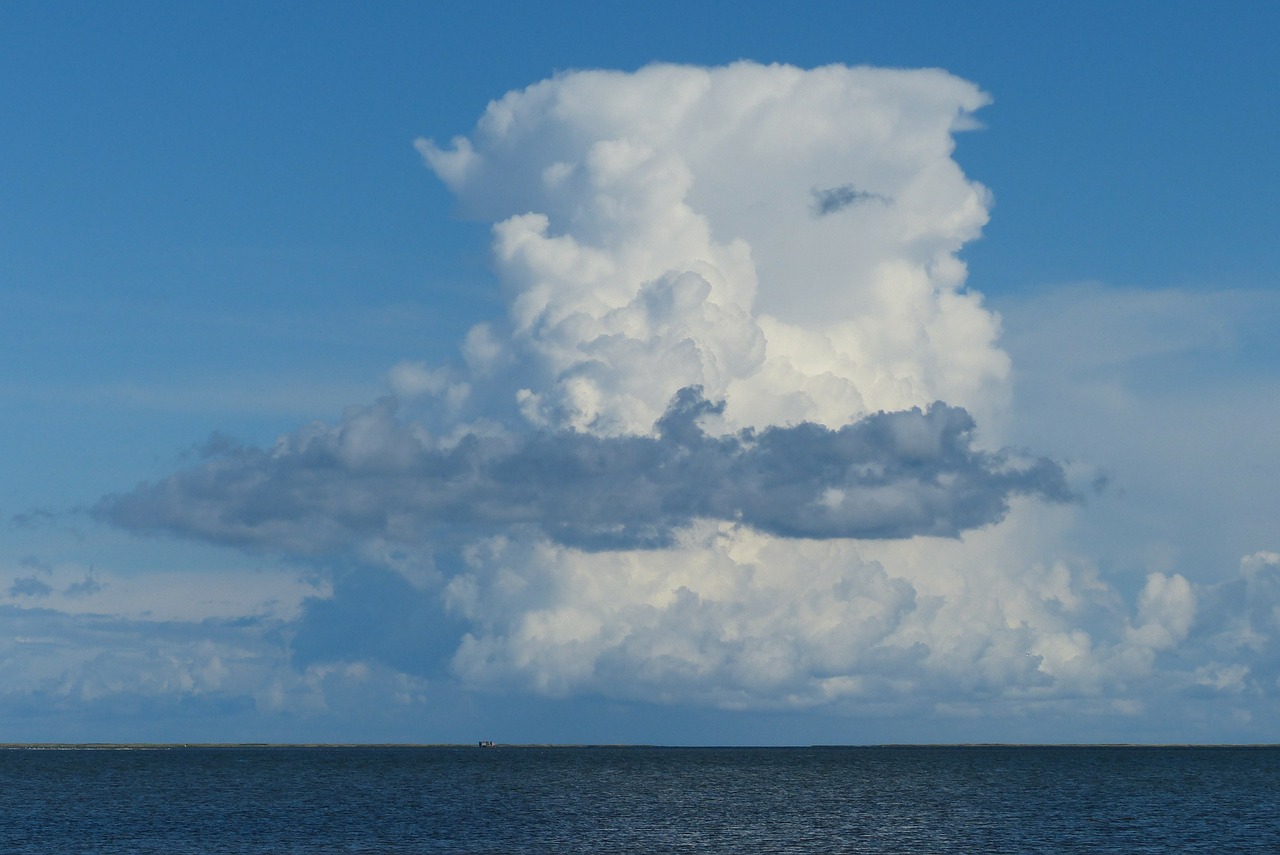4 Types of Summer Clouds You Can Spot in the Sky – From Roll Clouds to Cirrus
From rolling thunderclouds to delicate feather-like cirrus, the summer sky is full of meaning. This post introduces four types of clouds you can easily spot and what they reveal about the weather.
4 Types of Summer Clouds You Can Spot in the Sky – From Roll Clouds to Cirrus
 |
| A typical summer sky filled with fluffy cumulus clouds. I snapped this while driving past the city — the kind of view that always makes me look up and smile. |
4 Types of Summer Clouds You Can Spot in the Sky – From Roll Clouds to Cirrus
Have you ever seen a cloud so big and dramatic it looked like a tsunami?
That’s exactly what happened recently off the coast of Portugal, where a massive cloud formation swept across the sky like a giant rolling wave. At first glance, it was hard to believe it was a cloud at all.
1. Roll Cloud (Stratocumulus)
That incredible cloud from Portugal is called a roll cloud, a type of stratocumulus cloud. It forms when hot air rises from the land during the day and is later pushed by cooler air in the evening, often near coastal regions. On that particular day, the temperature hit 46.6°C — no wonder such dramatic clouds formed!
“Strato” means layer and “cumulus” means heap in Latin, which describes how these clouds spread out in gray layers at low altitudes, around 2,000 meters. They’re especially common in marine climates like Monterey Bay, where the morning fog often disappears after sunset.
2. Cumulus (Fair Weather Clouds)

Cumulus clouds are those big, puffy white clouds that rise high into the blue summer sky. You often see them on sunny afternoons — they don’t usually bring rain but provide a bit of cool shade and visual delight. These clouds are a symbol of summer, even appearing in children’s songs and picture books.
They form through convection: warm air rising during the day condenses into fluffy clouds. The hotter and sunnier the day, the more active the convection — and the taller the cumulus clouds grow.
Sometimes, when conditions are right, a cumulus cloud can develop into something much more powerful…
3. Cumulonimbus (Thunderstorm Clouds)

This is the cumulonimbus, also known as a thunderstorm cloud or shower cloud. It’s tall and towering like a mountain or anvil, and you can instantly tell it’s different from the fair-weather cumulus clouds.
The key difference? Rain. Cumulonimbus clouds bring heavy showers, thunder, lightning, even hail or strong winds. They often form on hot, humid afternoons and cause sudden weather changes. One moment you’re walking under the sun, and minutes later, you’re caught in a downpour. That’s the power of a cumulonimbus.
4. Cirrus (Feathery Clouds)

High up in the sky — sometimes over 8 to 10 kilometers — you might notice thin, wispy clouds that look like feathers. These are cirrus clouds, made of tiny ice crystals rather than water droplets.
In Latin, cirrus means “a lock of hair” or “ringlet,” which describes their shape perfectly. In Korea, they’re often called “feather clouds.” While they may seem delicate, cirrus clouds can signal changes in the weather, especially when they spread out across the sky before a warm front.
Final Thoughts
The summer sky is more than just a backdrop for the heat.
It’s a canvas full of motion and meaning — clouds that rise, drift, and sometimes warn us of what’s to come.
So next time you look up, try to name the clouds you see.
You don’t need to be a meteorologist — just a bit of curiosity is enough.
Because noticing the clouds is the first step to understanding the sky.
Comments
Post a Comment